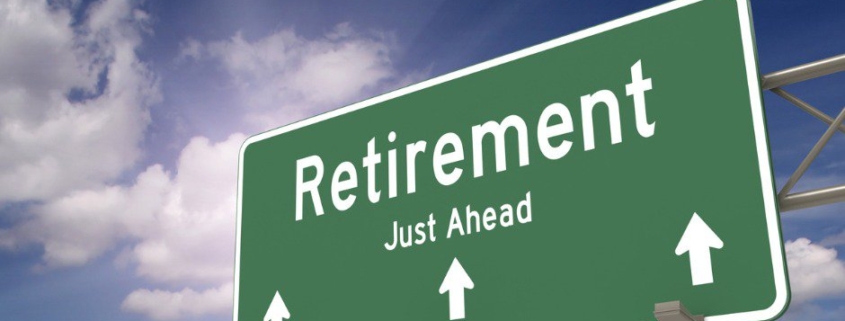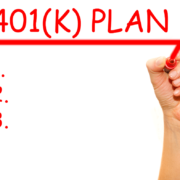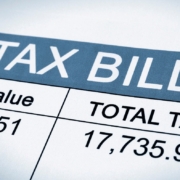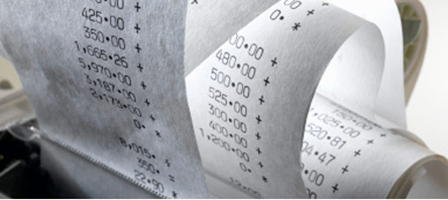Planning for Your Retirement – New Wrinkles from the SECURE 2.0 Act
- Learn about the SECURE 2.0 Act.
- Find information about catch-up contributions.
- Learn about incentives to contribute to a plan.
- Find out how SECURE 2.0 affects long-term part-time workers.
- Learn about required automatic enrollment.
- Find information regarding Required Minimum Distributions (RMDs).
- Learn about RMD penalties.
- Discover information regarding employer-sponsored emergency savings accounts.
- Find information about penalty-free withdrawals.
- Learn about other distribution changes.
In 2019 Congress passed legislation named the Setting Every Community Up for Retirement Enhancement Act – shortened to the SECURE Act – that included a number of retirement plan changes and enhancements. To encourage more Americans to save for retirement and make it easier to do so, Congress designed the SECURE Act 2.0. In December 2022, the SECURE 2.0 Act was passed and signed by the President. Some of these changes could impact your retirement plan strategy. Below, you will find some of the highlights of SECURE 2.0:

Contributions to IRAs and Other Plans in SECURE 2.0
Some of the law changes meant to encourage more workers to save for retirement include:
Catch-up contributions
Employees aged 50 and older may make additional pre-tax contributions to their 401(k) plans over the regular annual limit. Referred to as “catch-up” contributions, the idea is to get older workers to build up their retirement accounts in their last few years of working. The catch-up amount originally started out many years ago at $1,000. However, it has grown with annual inflation adjustments to $7,500 for 2023. Starting in 2025, for plan participants aged 60 to 63, the catch-up amount increases to at least $10,000 per year. It will be inflation-adjusted after 2025.
The amount of the catch-up contribution IRA owners aged 50 and over can make has long stood at $1,000 per year. Starting in 2024, the $1,000 will be indexed for inflation in $100 increments.
Under SECURE 2.0 employers can revise their retirement plans so that employees can choose to have employer-matching and catch-up contributions go into a Roth-style plan with after-tax contributions. Historically, matching and catch-up contributions have only been allowed as pre-tax contributions. However, starting in 2024, plan participants making more than $145,000 per year from the employer sponsoring the plan can only have their catch-up contributions and the employer-matching amounts go into the employer’s Roth plan. With Roth contributions, there is no tax deduction or tax-free wage benefit. However, withdrawals from the Roth plan, including investment gains, are tax-free once the account owner reaches age 59½ and has had the plan for at least 5 years.
Financial incentives to contribute to a plan
As noted above, employers can provide matching contributions as a long-term incentive for employees to contribute to a 401(k) plan. However, the original SECURE act prohibits immediate financial incentives (like gift cards in small amounts) even though they motivate individuals to join their employers’ retirement plans. SECURE 2.0 enables employers to now offer de minimis financial incentives not paid for with plan assets. These incentives include low-dollar gift cards to boost employee participation in workplace retirement plans.
Long-term part-time workers
The original SECURE Act required employers to allow long-term, part-time workers to participate in the employers’ 401(k) plans. Except in the case of collectively bargained plans, employers maintaining a 401(k) plan have had a dual eligibility requirement under which an employee must complete:
- 1 year of service (working at least 1,000 hours) or
- 3 consecutive years of service (where the employee completes at least 500 hours of service).
Starting in 2025, SECURE 2.0 reduces the 3-year rule to 2 years and disregards pre-2021 service for vesting purposes. It also extends the long-term part-time coverage rules to 403(b) plans subject to the Employee Retirement Income Security Act of 1974 (ERISA). Generally, governments or tax-exempt organizations provide these plans, sometimes known as “tax-sheltered annuities.”
Automatic enrollment required
Most employees under-save for their retirement. Some don’t participate at all in their employer’s plan. To encourage greater participation, effective for plan years beginning after 2024, SECURE 2.0 requires 401(k) and 403(b) plans to automatically enroll participants in the respective plans upon becoming eligible. However, employees may opt out of coverage. The initial auto-enrollment amount is at least 3% but not more than 10% of an employee’s compensation. Each year thereafter, that amount increases by 1% until it reaches at least 10%, but not more than 15%.
All 401(k) and 403(b) plans in existence before December 29, 2022, are not required to have automatic enrollment. However, some of these employers may want to do so anyway or may have already established auto-enrollment arrangements. Also exempt from mandatory enrollment are small businesses with 10 or fewer employees; SIMPLE Plans; employers that have been in business for less than three years; and church and government plans.
Distributions from IRAs and Retirement Plans
The SECURE 2.0 Act made significant changes to when distributions must or may be made from retirement plans. These changes include the following:
Required Minimum Distributions (RMD)
Some individuals would prefer to keep their tax-advantaged contributions to retirement plans and traditional IRAs growing until their death. That way, more money goes to their heirs. However, Congress doesn’t see it that way and requires distributions to be made. As far back as the 1960s, distributions were required once the account owner reached age 70½. The SECURE Act extended the age to 72, and SECURE 2.0 changes it again, to 73 as of 2023.
But the language of the SECURE 2.0 bill is a bit awkward. It can be interpreted that because someone who turned 72 in 2022 was required to take a 2022 distribution, the fact that they turn 73 in 2023 doesn’t let them claw back the 2022 distribution already made or skip a 2023 distribution. So, unless the wording of the Tax Code changes in a technical corrections bill, just those who turn 72 in 2023 will get a pass on the requirement to take a 2023 distribution. Starting in 2033, the distribution beginning age increases to 75.
Delaying an RMD
Regardless of the required beginning date, if a taxpayer so chooses, he or she can delay the first year’s RMD until the second year. This makes the distribution includible in the second year’s tax return. If the taxpayer has substantial wages or other income in the year they reach the mandatory distribution age, and they expect less income the next year, this could work in their favor. In this situation, by delaying the distribution to the second year, the tax bracket could be substantially lower. If the taxpayer chooses that option, then:
- They must take the first year RMD by April 1 of the following year, and
- The taxpayer must also take the second-year RMD distribution by December 31 of year two, thus doubling up the distributions in year two.
RMD Penalties
Existing law sets the formula for computing the minimum amount an account owner must withdraw once they reach the required beginning age. To enforce the requirement, taxpayers must pay an egregious excise tax (commonly referred to as a penalty) of 50% of the required amount not withdrawn.
SECURE 2.0 reduces the excise tax for failure to take required minimum distributions from 50% to 25%, starting in 2023. If an account owner corrects their failure to take an RMD from an IRA in a timely manner, the 25% penalty rate reduces to 10%. Timely means submitting a corrected return either in the second year after they missed the RMD or before the IRS assesses a penalty, whichever comes first.
Prior to SECURE 2.0, the IRS offered administrative relief from the penalty for those who failed to take their RMD whereby the taxpayer could file a request for relief using IRS Form 5329 along with an explanation of why they did not take the correct amount of distribution. Generally, the IRS would waive the penalty if the taxpayer had immediately taken steps to rectify the shortfall once they discovered it and had a reasonable excuse for why they had not taken the RMD. Reasonable excuses included health problems, a death in the family, confusion about the rules, or receiving erroneous advice from an investment advisor or tax professional. There is no language in SECURE 2.0 that removes this method for eliminating the penalty, but the IRS may not as easily waive the penalty as in the past with the current penalty at 10%.
Emergency Savings Accounts
Though individuals can save on their own, far too many fail to do so. According to a report by the Federal Reserve, almost half of Americans would struggle to cover an unexpected $400 expense. Many must dip into their retirement savings. A recent study found that, in the past year, almost 60% of retirement account participants who lack emergency savings tapped into their long-term retirement savings, compared to only 9% of those who had at least a month of emergency savings on hand.
Congress decided that separating emergency savings from a person’s retirement savings account will provide participants a better understanding that one account is for short-term emergency needs and the other is for long-term retirement savings, thus empowering employees to handle unexpected financial shocks without jeopardizing their long-term financial security in retirement through emergency hardship withdrawals.
The details
To that end, SECURE 2.0 provides employers the option to offer retirement plan-linked emergency savings accounts to their non-highly compensated employees. Employers will need to amend their plans before they can offer these accounts. Some of the details:
- Employers may automatically opt employees into these accounts at no more than 3% of their salary. The portion of an account attributable to the employee’s contribution is capped at $2,500 (or lower as set by the employer).
- Once the employee reaches the cap, employers can direct the additional contributions to the employee’s Roth-defined contribution plan or stop until the balance attributable to contributions falls below the cap.
- Contributions are made on a Roth-like basis and treated as elective deferrals for purposes of retirement matching contributions with an annual matching cap set at the maximum account balance – i.e., $2,500, or lower as set by the plan sponsor.
- The first four withdrawals from the account each plan year may not be subject to any fees or charges. At separation from service, employees may take their emergency savings accounts as cash or roll it into their Roth-defined contribution plan or IRA.
Penalty-Free Withdrawals – Domestic Abuse
A domestic abuse survivor may need to access money in their IRA or retirement account for various reasons. SECURE 2.0 allows retirement plans to permit participants that self-certify that they experienced domestic abuse to withdraw a small amount of money that will not be subject to the 10% early withdrawal penalty that applies to plan withdrawals prior to age 59½. These withdrawals cannot exceed the lesser of $10,000, or 50% of the present value of the nonforfeitable accrued benefit of the employee under the plan. To be eligible, the distribution must be made during the 1-year period beginning on any date on which the individual is a victim of domestic abuse by a spouse or domestic partner.
Domestic abuse means physical, psychological, sexual, emotional, or economic abuse. This includes efforts to control, isolate, humiliate, or intimidate the victim, or to undermine the victim’s ability to reason independently including by means of abuse of the victim’s child or another family member living in the household.
While the early withdrawal penalty won’t apply to domestic abuse distributions, the regular tax does apply. However, the domestic abuse survivor may redeposit the amount withdrawn into their IRA or the employer’s plan at any time up to 3 years after the date on which they received the distribution. They can then file an amended return to recover the tax previously paid.
Other distribution rule changes in SECURE 2.0
The penalty when an individual takes an early distribution (before age 59½) from their traditional IRA or employer’s plan is 10% of the amount withdrawn. There are many exceptions to the penalty and SECURE 2.0 added some new ones. Briefly, these new exceptions include:
- Individuals in federally declared disaster areas can now withdraw up to $22,000 from an IRA or retirement plan with no penalty. The tax on the distribution can be paid over 3 years.
- As of 2023, an employee who has been certified by a physician as being terminally ill and who presents evidence of that diagnosis to the plan administrator can make a penalty-free withdrawal from their retirement plan.
- As of December 30, 2025, penalty-free distributions of up to $2,500 can be made to cover long-term care expenses.
The SECURE 2. Act changes discussed in this article are only a few of the more than 90 provisions in the Act that affect retirement plan participants and employers offering the plans over the next few years. Have questions about how your retirement contributions and distributions will be impacted? Call Fiducial at 1-866-FIDUCIAL or make an appointment at one of our office locations to discuss your situation.
Ready to book an appointment now? Click here. Know someone who might need our services? We love referrals!









